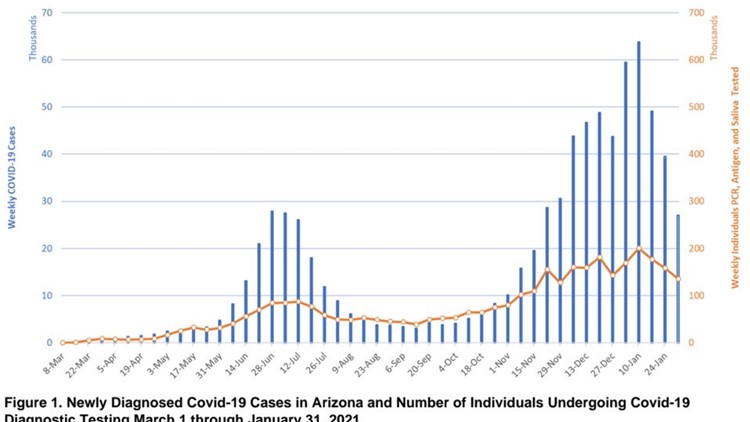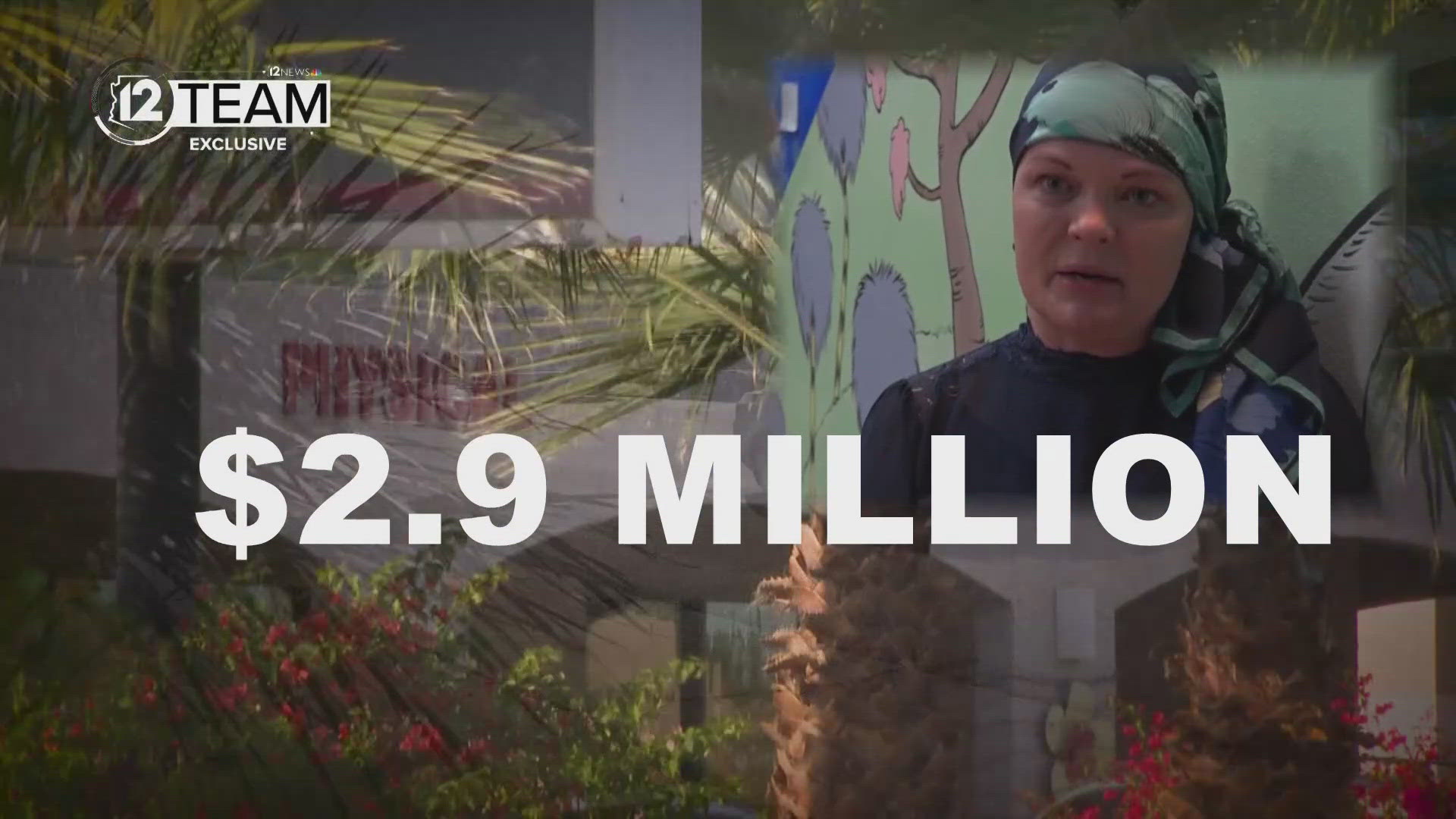TUCSON, Ariz. — Arizona's coronavirus data since October has outlined the increasing number of people who have gotten sick, were hospitalized, and died from the virus.
But, in the past few weeks, the state's data has provided a sense of hope as multiple metrics are shown to be on the decline.
The University of Arizona's weekly COVID-19 Disease Outbreak Outlook is one of the reports that offers a glimpse into the state's battle with the virus.
Here are three things you should know from the university's most recent report published Saturday:
1. Cases and hospitalizations see 'real decrease,' mortality rates will soon follow
New coronavirus cases in Arizona saw the third straight week of decline with a a 31% decrease compared to last week, from 38,921 new cases last week to 27,028 new cases this week.
Inpatient and ICU bed use for COVID-19 patients also saw significant decreases in the past few weeks. Inpatient bed use has seen a 20% decrease, from 3,828 to 3,060, and ICU bed use has seen a 14% decrease, from 984 to 849.
Hospitalizations for COVID-19 patients has dropped 40% since the peak on Jan. 11, when there were 5,082 general ward patients.
Coronavirus-related deaths in the state have continued to be high with minimal decreases. However, this may change in the coming weeks, as "reductions in mortality should soon follow," the report said.
2. Hospitals are still 'filled to the brim'
Safety margins for the state's hospitals are improving, but they still remain considerably lower compared to this past fall.
Decreases in hospitalization numbers and occupancy are encouraging as less capacity constraints mean a greater chance for all patients will be able to receive optimal care, according to the report.
However, hospitals are still awhile away from any glimpse of normalcy.
"The tremendous backlog of postponed care will take months to resolve," the report said. "Hospitals will remain crowded through February before returning to pre-outbreak levels in early spring assuming continued reductions in vrial transmission."
3. Initial decreases aren't cause for celebration. The state needs to 'hold the line'
The Arizona Department of Health Services and residents of Arizona must continue to hold and abide by public health guidance, even in the face of encouraging numbers, according to the report. If mitigation measures are relaxed, the state could once again see drastic increases.
"Resumption of high-risk activities before absolute levels [of transmission] further subside would be akin to jumping out of your exit-row seat at 10,000 feet with the pilot announces his initial descent into the airport," the report said.
"It matters little whether you jump out on the way up or the way down; it's going to hurt either way. Policymakers would be wise to wait for the captain to turn off the fasten your seat belt sign before."
You can read the full report here.



